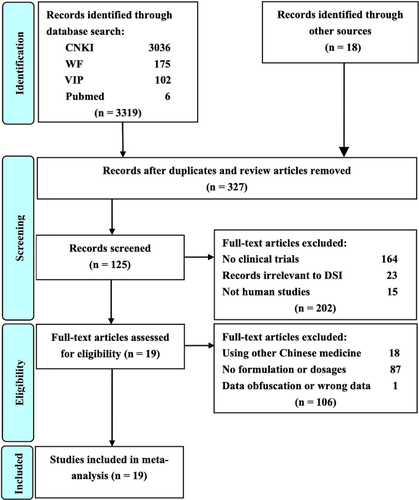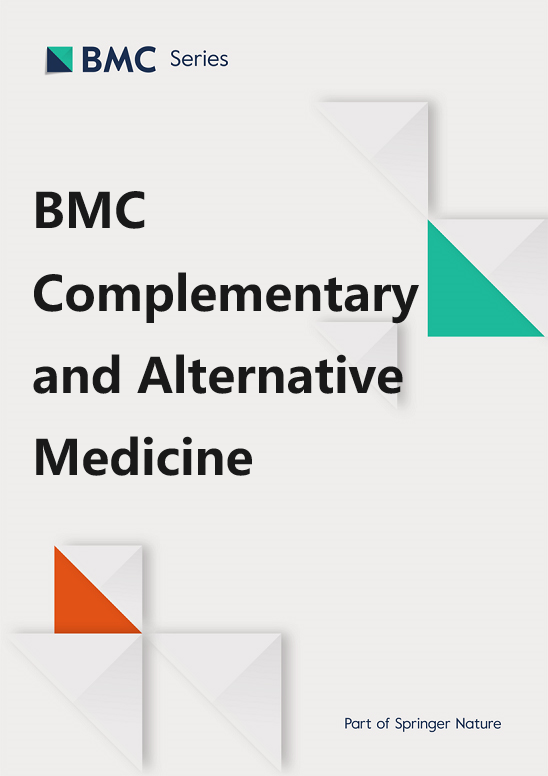关于丹参酮 IIA 磺酸钠注射液辅助治疗肺心病的系统综述和荟萃分析
IF 3.4
2区 医学
Q1 Medicine
引用次数: 0
摘要
在中国,丹参酮 IIA 磺酸钠注射液(STS)已被广泛用于肺心病(PHD)的辅助治疗。然而,迄今为止,尚未对注射用丹参酮 IIA 磺酸钠的疗效进行系统评估。因此,本研究探讨了 STS 注射液作为 PHD 辅助疗法的疗效。本研究从中国科技期刊数据库、中国国家知识基础设施、万方数据库、PubMed、Sino-Med、Google Scholar、Medline、中国生物医学文献数据库、Cochrane图书馆、Embase和中国科学引文数据库(截至2024年1月20日)中筛选随机对照试验(RCT)。文献检索、数据收集和质量评估由两名研究人员独立完成。提取的数据使用 RevMan 5.4 和 STATA 14.0 进行分析。根据方法学质量、STS注射剂量、对照组措施和干预时间,进行了敏感性分析和亚组分析。本研究共纳入了 19 项 RCT,1739 名患者。结果显示,作为辅助疗法,STS注射液联合西药治疗PHD的临床有效率(RR = 1.22; 95% CI, 1.17 to 1.27; p < 0.001)、氧分压(MD = 10.16; 95% CI, 5.07 to 15.24; p < 0.001)、左室射血分数(MD = 8.66; 95% CI, 6.14 to 11.18; p < 0.001)和搏出量(MD = 13.10; 95% CI, 11.83 to 14.38; p < 0.001),同时降低低剪切血液粘度(MD = -1.16; 95% CI, -1.57 to -0.74; p < 0.001)、高剪切血液粘度(MD = -0.64; 95% CI, -0.86 to -0.42; p < 0.001)、血浆粘度(MD = -0.23; 95% CI, -0.30 to -0.17;p < 0.001)、血细胞比容(MD = -8.52;95% CI,-11.06 to -5.98;p < 0.001)、纤维蛋白原(MD = -0.62;95% CI,-0.87 to -0.37;p < 0.001)和二氧化碳分压(MD = -8.56;95% CI,-12.09 to -5.02;p < 0.001)。注射 STS 作为辅助疗法治疗 PHD 似乎比单独使用西药更有效。然而,由于纳入的研究性临床试验的质量较低,因此需要更多设计良好的研究性临床试验来验证 STS 注射剂的疗效。本文章由计算机程序翻译,如有差异,请以英文原文为准。

A systematic review and meta-analysis on sodium tanshinone IIA sulfonate injection for the adjunctive therapy of pulmonary heart disease
Sodium tanshinone IIA sulfonate (STS) injection has been widely used as adjunctive therapy for pulmonary heart disease (PHD) in China. Nevertheless, the efficacy of STS injection has not been systematically evaluated so far. Hence, the efficacy of STS injection as adjunctive therapy for PHD was explored in this study. Randomized controlled trials (RCTs) were screened from China Science and Technology Journal Database, China National Knowledge Infrastructure, Wanfang Database, PubMed, Sino-Med, Google Scholar, Medline, Chinese Biomedical Literature Database, Cochrane Library, Embase and Chinese Science Citation Database until 20 January 2024. Literature searching, data collection and quality assessment were independently performed by two investigators. The extracted data was analyzed with RevMan 5.4 and STATA 14.0. Basing on the methodological quality, dosage of STS injection, control group measures and intervention time, sensitivity analysis and subgroup analysis were performed. 19 RCTs with 1739 patients were included in this study. Results showed that as adjunctive therapy, STS injection combined with Western medicine showed better therapeutic efficacy than Western medicine alone for PHD by increasing the clinical effective rate (RR = 1.22; 95% CI, 1.17 to 1.27; p < 0.001), partial pressure of oxygen (MD = 10.16; 95% CI, 5.07 to 15.24; p < 0.001), left ventricular ejection fraction (MD = 8.66; 95% CI, 6.14 to 11.18; p < 0.001) and stroke volume (MD = 13.10; 95% CI, 11.83 to 14.38; p < 0.001), meanwhile decreasing the low shear blood viscosity (MD = -1.16; 95% CI, -1.57 to -0.74; p < 0.001), high shear blood viscosity (MD = -0.64; 95% CI, -0.86 to -0.42; p < 0.001), plasma viscosity (MD = -0.23; 95% CI, -0.30 to -0.17; p < 0.001), hematokrit (MD = -8.52; 95% CI, -11.06 to -5.98; p < 0.001), fibrinogen (MD = -0.62; 95% CI, -0.87 to -0.37; p < 0.001) and partial pressure of carbon dioxide (MD = -8.56; 95% CI, -12.09 to -5.02; p < 0.001). STS injection as adjunctive therapy seemed to be more effective than Western medicine alone for PHD. However, due to low quality of the included RCTs, more well-designed RCTs were necessary to verify the efficacy of STS injection.
求助全文
通过发布文献求助,成功后即可免费获取论文全文。
去求助
来源期刊

BMC Complementary and Alternative Medicine
INTEGRATIVE & COMPLEMENTARY MEDICINE-
CiteScore
7.00
自引率
0.00%
发文量
0
审稿时长
3 months
期刊介绍:
BMC Complementary Medicine and Therapies is an open access journal publishing original peer-reviewed research articles on interventions and resources that complement or replace conventional therapies, with a specific emphasis on research that explores the biological mechanisms of action, as well as their efficacy, safety, costs, patterns of use and/or implementation.
 求助内容:
求助内容: 应助结果提醒方式:
应助结果提醒方式:


